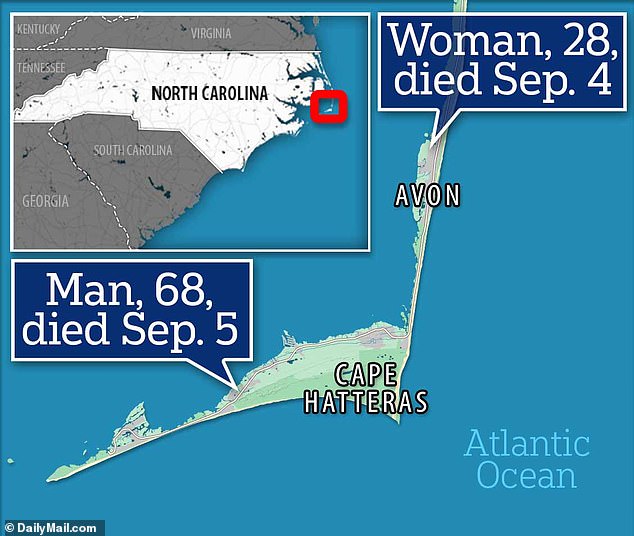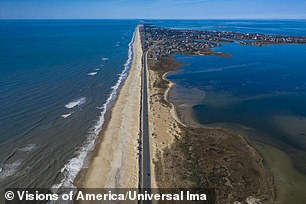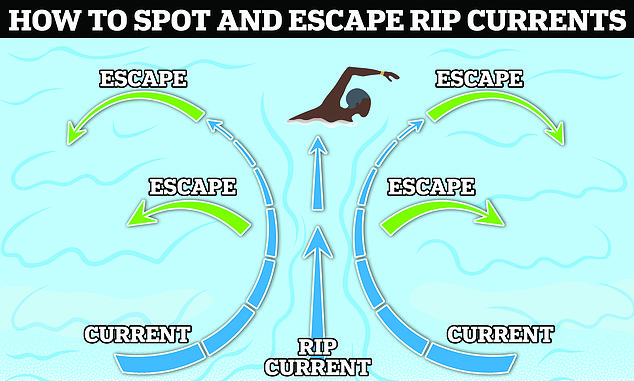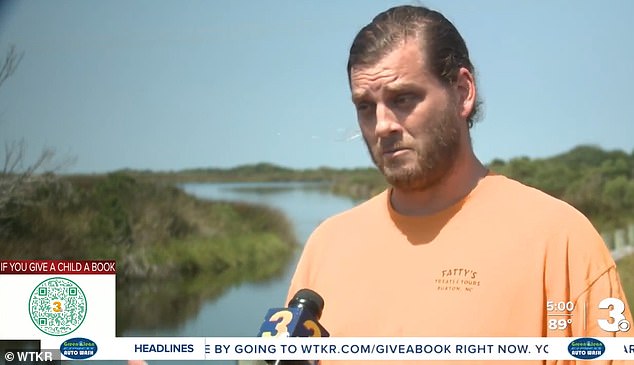Swimmer Ferozan Walizai, 28, and Ohio man, 68, drown off Outer Banks in North Carolina within 24 hours of each other – as man describes trying to rescue victim from thundering waves
A woman and man both drowned within 24 hours off the coast of the Outer Banks, North Carolina, as a swimmer recounted his harrowing rescue attempt in the “thundering” waves.
Ferozan Walizai, 28, of Washington DC drowned Monday afternoon off the coast of Avon on the Cape Hatteras National Seashore. A man, 68, from Hillsboro, Ohio, drowned nearby the next day. Both were tourists.
Local swimmer Jeff Dawson was one of two witnesses who tried to save Walizai, who was “overrun by strong waves” and disappeared into the rough surf before falling face down and unresponsive around 2:30pm.
He and the female witness returned Walizai’s body to shore, where resuscitation efforts were unsuccessful.
Dawson described WTKR what he had said to the witness, saying, “I swam over to her and I thought, ‘Honey, I’m so sorry.’ I can save you. You’ll be fine, but that other person who was gone, she’s gone. I am so sorry.”
Local swimmer Jeff Dawson was one of two witnesses who tried to save Walizai, who was “overrun by strong waves” and disappeared into the rough surf before falling face down and unresponsive around 2:30pm.

The first confirmed dead, Ferozan Walizai, was found off the coast of Avon on Monday, September 4. The second drowning victim was found the next day on the south side of Cape Hatteras Island.
Dawson has helped many people into the water before, but says he has never experienced anything like it.
He described the crashing waves on the beach as thunder on Monday, a sign he says should warn people to stay out of the water.
The second confirmed drowning was a man from Hillsboro, Ohio, who died on the south side of Cape Hatteras Island near the Hatteras Inlet Ferry.
Emergency services received a call from an unconscious person in the ocean around 10:30 am.
Two witnesses rushed in and pulled him out after seeing the man swimming before he called for help and disappeared underwater.
When emergency services arrived, CPR attempts were unsuccessful.
Hatteras Island had a Beach Hazard Statement warning of large breaking waves.
David Hallac, the superintendent of the National Parks of Eastern North Carolina, said in a statement: “The Cape Hatteras National Seashore extends its condolences to the families and friends of the swimmers who lost their lives in the past two days.”

Both drownings occurred at the Cape Hatteras National Seashore, which flows along Outer Banks Highway 12
Hallac added that “high energy surf conditions” such as rough waves and rip currents are expected to be present in the area over the next week.
The aftermath of hurricanes Franklin and Idalia has created currents on beaches from North Carolina to New York.
On both days, ocean conditions warned of strong currents, which kill 100 people each year in the US.
Although rip currents and tides are similar, they are two separate ocean events.
Currents are created when waves are pushed against the beach, and tides are created when water is pulled along a barrier beach through an inlet.
The Outer Banks are made up of three counties: Currituck, Dare, and Hyde.
The Outer Banks, also known as OBX, is 320 kilometers long, 3 kilometers long at its widest point and 150 meters long at its narrowest point.
OBX is a popular vacation destination for families who often rent beach houses during the summer.

Currents are created when waves are pushed against the beach, and tides are created when water is pulled along a barrier beach through an inlet.

Dawson has helped many people into the water before, but says he has never experienced anything like it
Hallac said: ‘Visitors who wade into the surf, even as shallow as their waists, can be overwhelmed by large waves, sustain injuries and be overtaken by rough ocean conditions, making it difficult if not impossible for all but the fittest, most. experienced swimmers to survive.’
He also warned that swimmers should listen to lifeguards’ directions and consider wearing a flotation device in the dangerous waters.
The National Parks Service has encouraged people to find beaches on the sane side like Haulover, Salvo, and Devil Shoals Road where they can enjoy the water in a safer environment.
Compared to beaches, sounds are known to be calmer and much safer, with no high tide, current or undertow.
